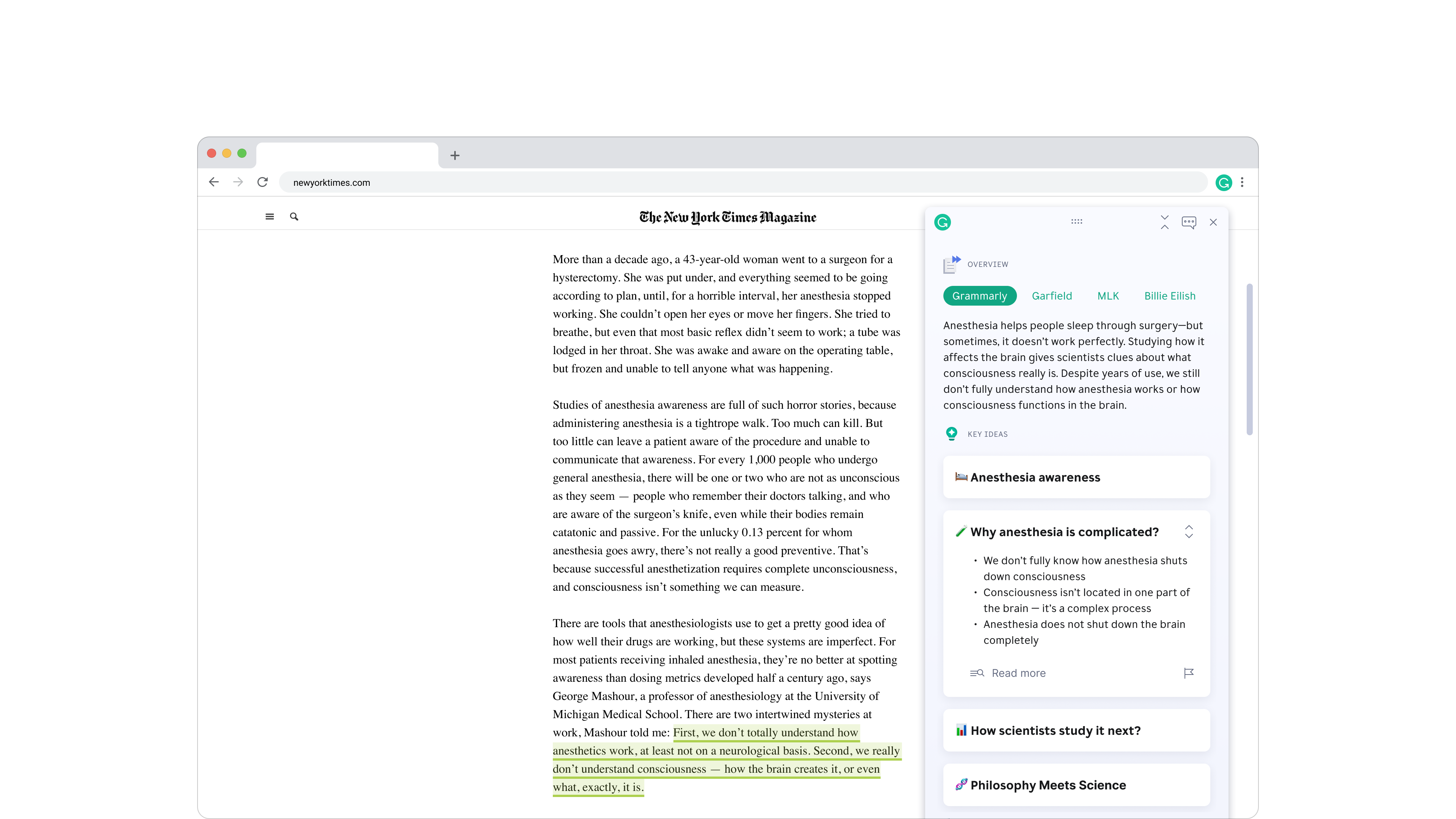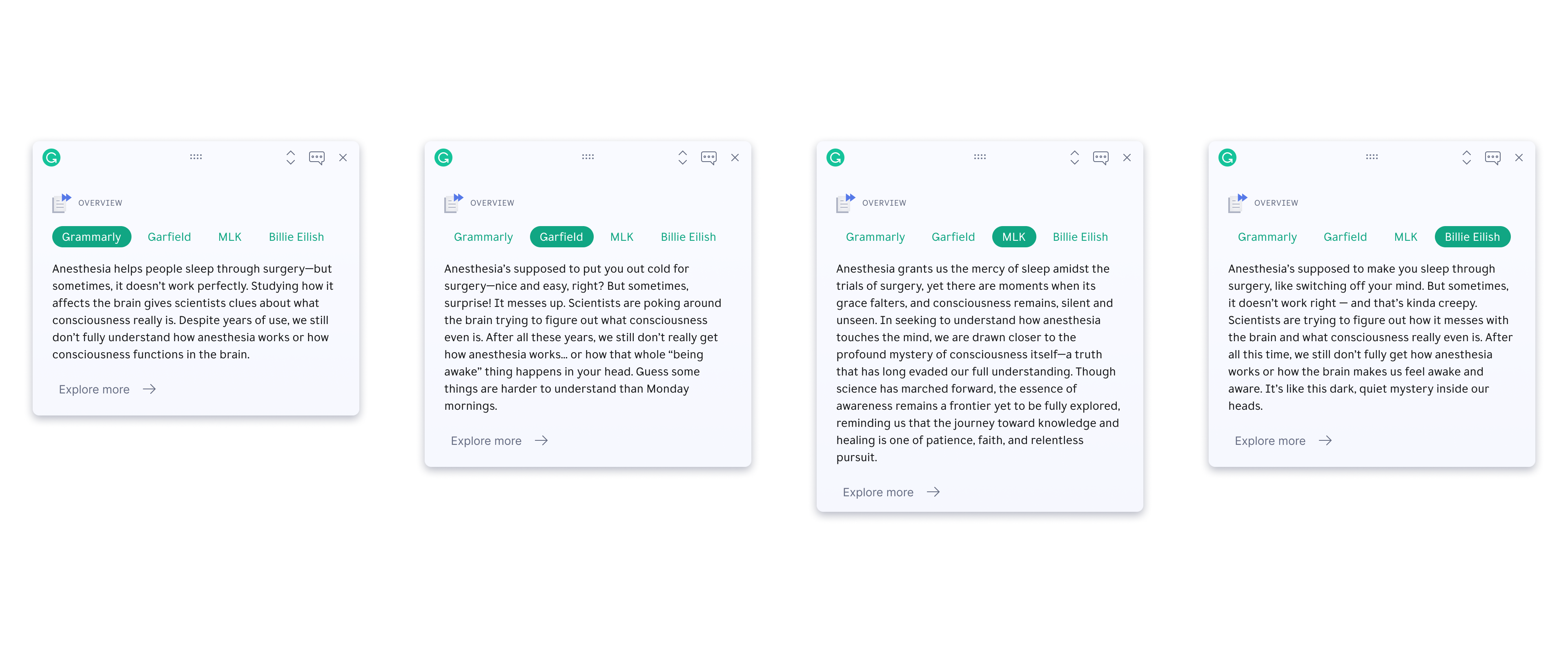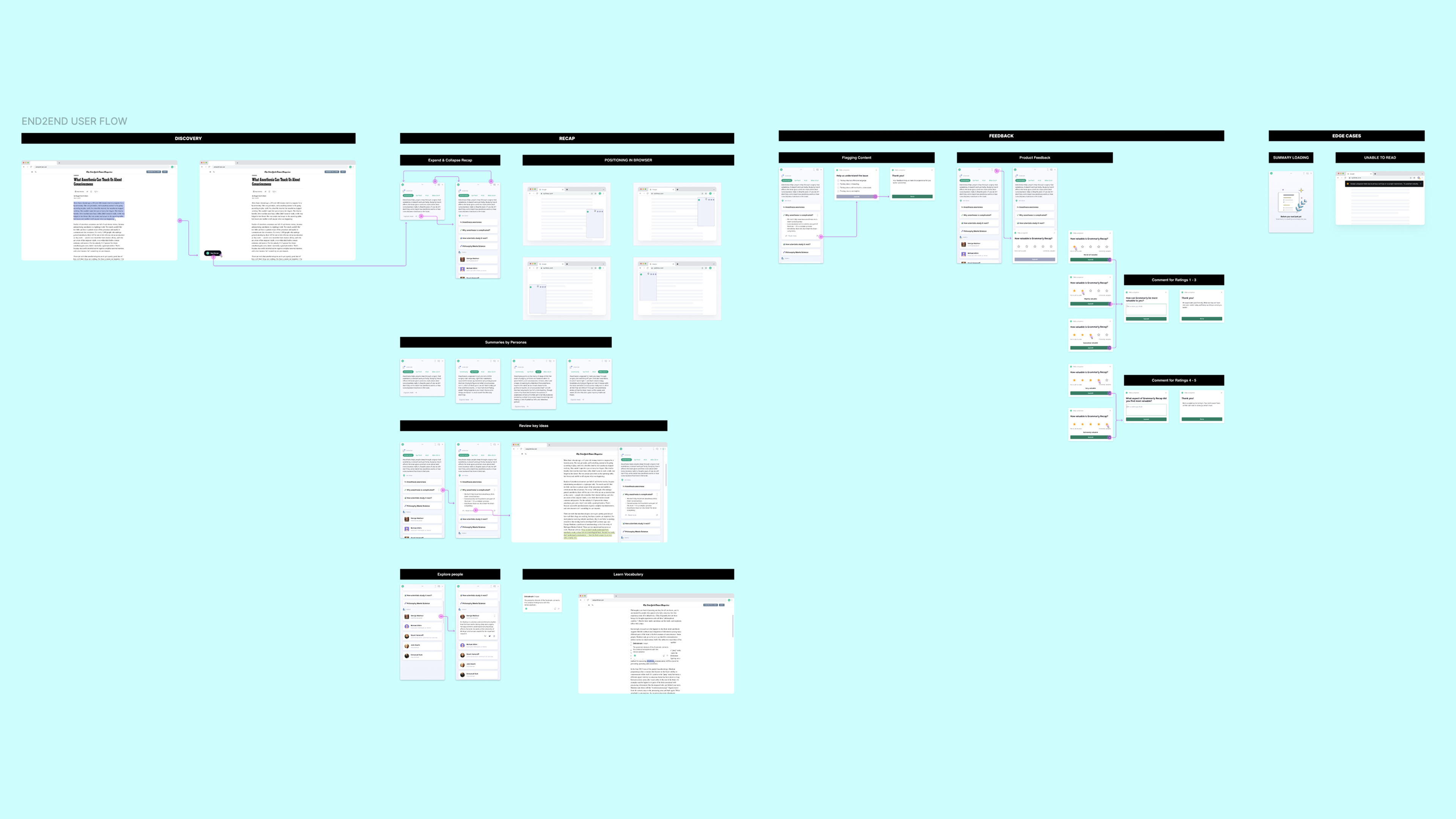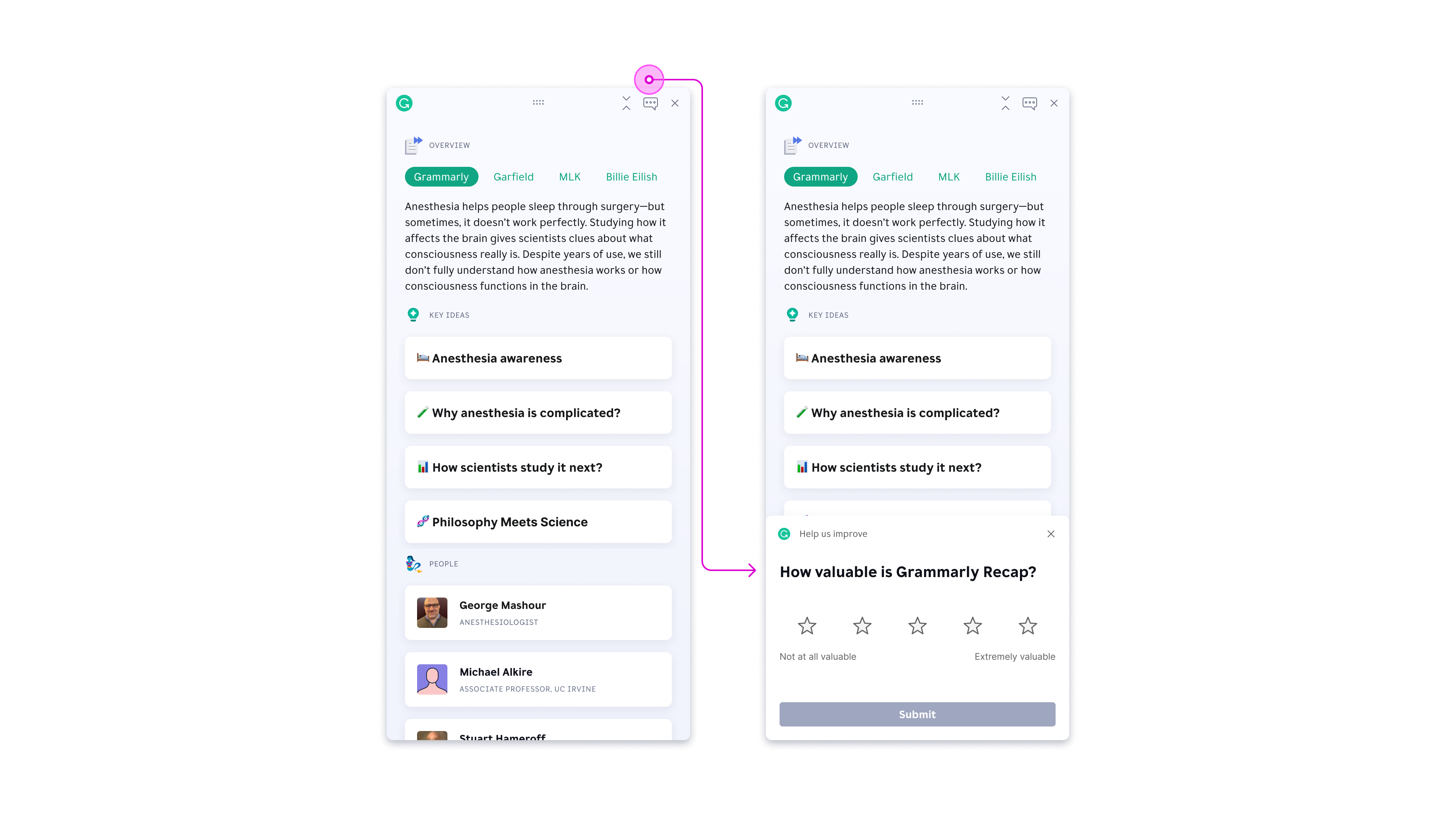Rocío Del Carmen

At Grammarly, I led early explorations into expanding our value for students beyond writing—unlocking new ways to support learning in an evolving AI landscape.
As part of this strategic initiative, I identified key opportunity areas and pain points in how students engage with complex material. I crafted and pitched a compelling case to our Head of Product on why investing in comprehension was critical to staying ahead in a competitive market.
I also shaped the first beta experience—from defining the product scope to designing end-to-end interactions and detailed workflows, laying the foundation for a smarter, more holistic fierce supporter.
Better readers make better writers.
But for millions of students, the bigger challenge often starts before writing: understanding content. Dense academic texts, unfamiliar vocabulary and cultural references create barriers that make comprehension difficult, slowing learning and reducing confidence.
This can also get in the way of students developing their own unique voice and creativity. Reading deeply and critically feeds their writing skills and helps them express ideas more clearly, accurately and compellingly.
It was time for Grammarly to help students not only succeed in school but develop lifelong skills for confident expression and critical thinking.
For this initiative, I helped product narrowed the focus to Foundation Learners—our most active and loyal student segment. They used Grammarly often, were most likely to upgrade to Premium and relied on it in their daily routines. Since they had the most to lose if the product stopped delivering value, they were the ideal early adopters.
I conducted in-depth interviews with ESL university students across the US, UK, Canada and Australia to map the real-world challenges these learners face—from decoding academic texts to building confidence in a second language. Synthesizing these insights, I crafted a clear profile of what our early adopters value, need, and expect—laying the groundwork for a product in comprehension they would want to use every day.
Through diary studies, I learned that many Foundation Learners struggle to understand both academic PDFs and long-form online articles. I explored two design directions:
After concept testing and cross-functional feedback, I prioritized Direction 1. Academic PDFs posed significant challenges—such as copyright restrictions and inconsistent formatting—that required additional investment in analytical linguists to ensure accurate parsing and content consistency. Online articles, however, allowed us to deliver value quickly with fewer technical and legal barriers.
I proposed launching with bite-sized summaries for online articles, making reading more approachable for students and creating a scalable foundation for future product growth.
I developed engaging, bite-sized summaries that leverage the authentic voices of Gen Z icons to drive higher user engagement. These summaries felt more relatable and entertaining—making learning feel less like a chore and more like a conversation with someone they admire.
Recap also gave quick overviews of key ideas and people so students were able to grasp better the content without getting lost online googling vocabulary or a person.




I replaced the generic product feedback form with a tailored perception value survey to uncover why our new product was or wasn’t delivering value. This approach enabled more actionable insights and deeper conversations with customers during the beta—helping Product align faster on opportunities and gaps. Other teams also adopted this survey framework to evaluate the impact of new features.
